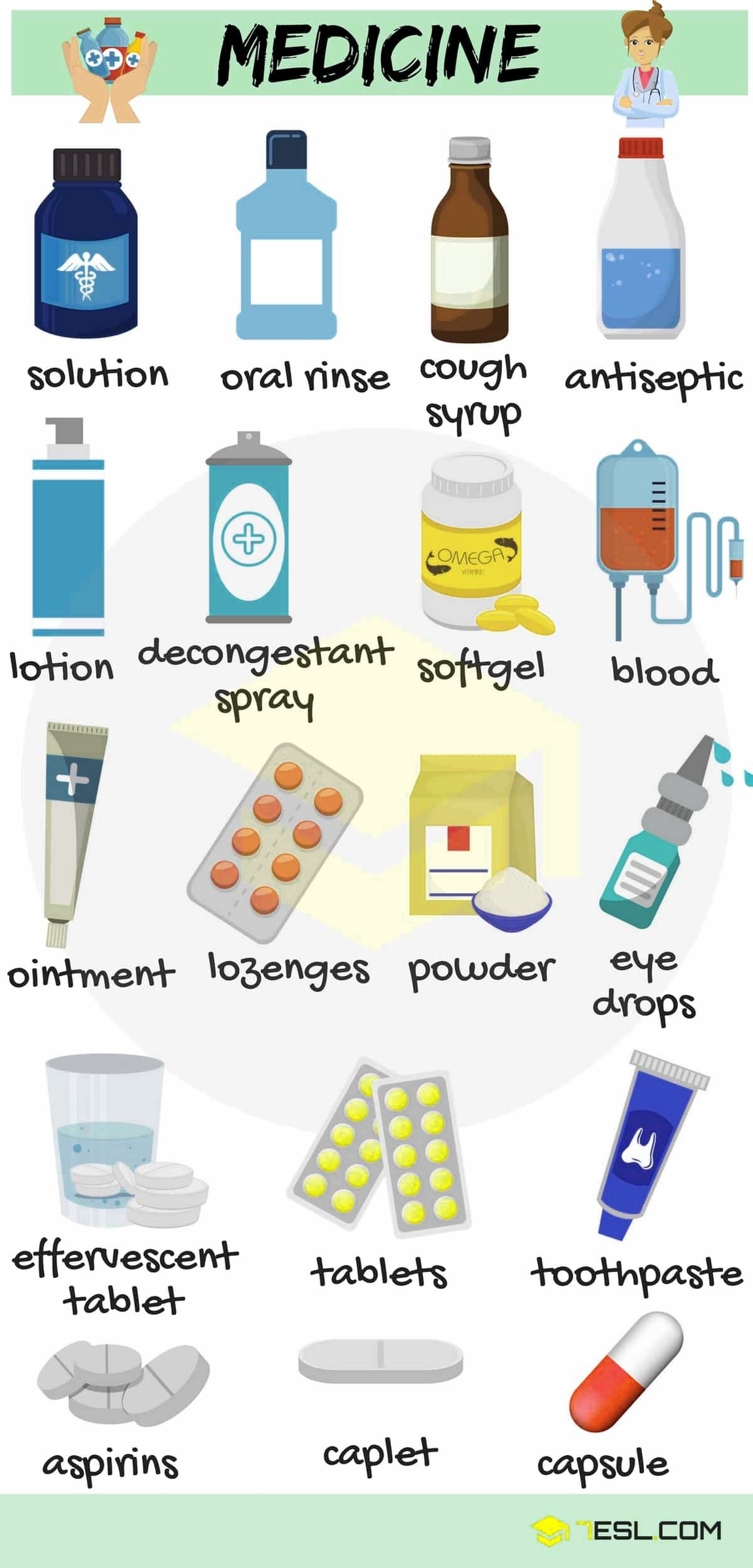Medicine Vocabulary
Medicine Vocabulary
Medicine vocabulary is a collection of terms and phrases used in the medical field. It’s essential for healthcare professionals, patients, and anyone who wants to understand health-related discussions. Here are some key terms:
1. Abnormal: Not normal for the human body.
2. Ache: Pain that won’t go away.
3. Acute: Quick to become severe.
4. Allergy: A body’s abnormal reaction to certain foods or environmental substances.
5. Ambulance: Emergency vehicle that rushes people to a hospital.
6. Amnesia: A condition that causes people to lose their memory.
7. Amputation: Permanent removal of a limb.
8. Anaemia: Occurs when the body doesn’t have enough red blood cells.
9. Antibiotics: Medication that kills bacteria and cures infections.
10. Anti-depressant: Medication that helps relieve anxiety and sadness.
11. Appointment: A scheduled meeting with a medical professional.
12. Arthritis: A disease that causes the joints to become swollen.
13. Asthma: A condition that causes a blockage of the airway and makes it difficult for a person to breathe.
14. Bacteria: A disease-causing organism.
15. Bedsore: Wounds that develop on a patient’s body from lying in one place for too long.
16. Benign: Not harmful (not cancerous).
17. Biopsy: Removal of human tissue in order to conduct certain medical tests.
18. Blood Count: The amount of red and white blood cells a person has.
19. Blood Donor: A person who gives blood to a blood bank or other person.
20. Blood Pressure: The rate at which blood flows through the body.
These terms are just the tip of the iceberg when it comes to medical vocabulary. There are many more terms related to specific fields of medicine, procedures, diseases, and conditions. Understanding these terms can help you navigate healthcare settings and communicate effectively about health issues..
Medicine Vocabulary Diagram - Medicine Vocabulary Chart - Human anatomy diagrams and charts explained. This anatomy system diagram depicts Medicine Vocabulary with parts and labels. Best diagram to help learn about health, human body and medicine.
